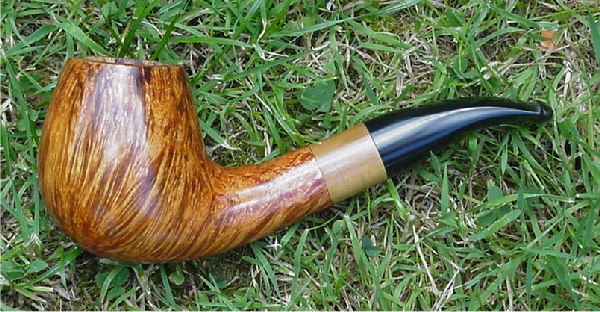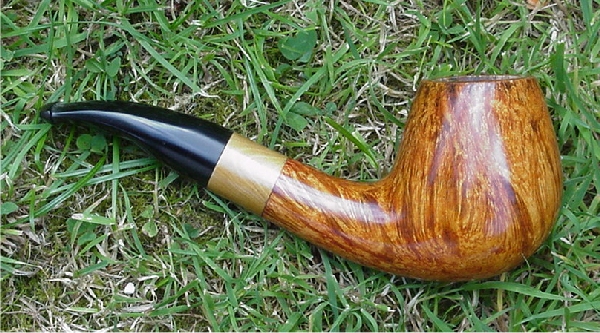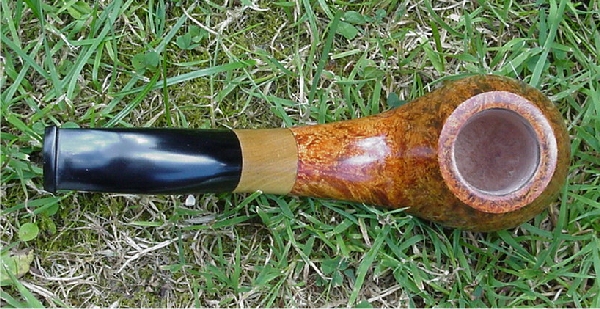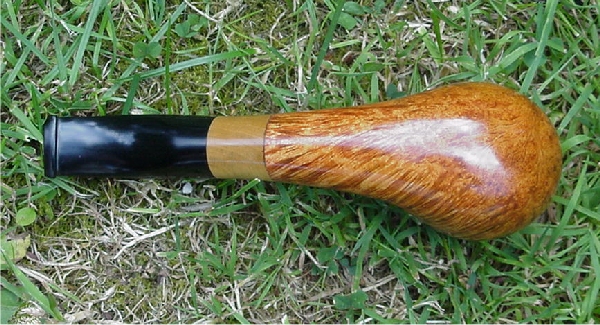just finished #5:




At this pipe the stem is handcut ebonit again. While grinding the bowl I was in trouble: A big scratch of included bork appeared! I fortunatly got it managed, but the bowl is now 2 mm thinner then planned..
The application is buxwood - unfortunatly ther are 2 fissures I couldn't grind off and they changed the color while fixing with danish oil...
The finish is a little bit tricky: First black stain for about 2 hours, then removed carefully for a contrast staining, then orange stain over night, again grinded nearly completely off and at last golden stain - that gives something like a wild structure, doesn't it? Aftre staining I polished with 000 steelwool and fixed with Danish Oil. Drying time was 2 and a half day, then I polished with carnauba.
Issues: 2 fissures in the buxwood application, 3 very small sandpits, but not remarkable with this finish, a little bit of black stain in the bowl...
Also the stain frayed a little bit at the buxwood - I didn't know how to manage the application before staining, so I glued the application before staining, filed shank, application and stem an stained after this. I tried to cover the application with adhesive tape, but...
The stem is - as said before - handcut and bend with a hotair-gun
Some technical details (in metric):
Length: 150 mm (stem: 61 mm, application 18 mm), hight: 55 mm, width: 42 mm, tobacco chamber diameter: 24 mm, depth: 48 mm, bowl border: 5 mm;
Bit width: 18 mm, hight: 4.5 mm, bar (?): 3,5 mm
Drillings: mouthpiece: 2 mm (ca. 15 mm deep), smokechannel: 3 mm, shank: 3 / 8 mm (no filter).
Comments?
Greetings,
Heinz_D